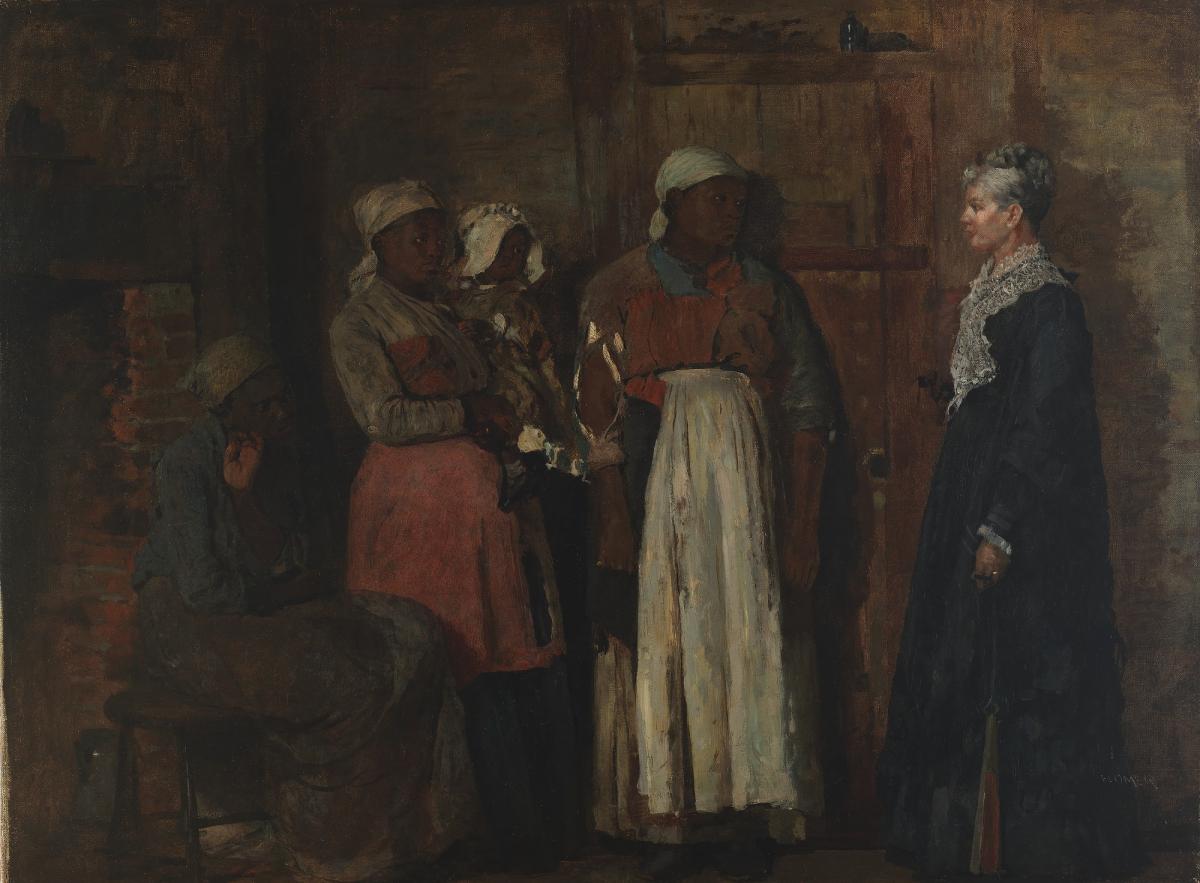In this post, program coordinator Christopher Wayner talks about a recent discovery made by conservators in the museum's Lunder Conservation Center.
American Art paintings conservator, Amber Kerr-Allison, spent hours removing discolored varnishes and past restoration painting from Winslow Homer's A Visit from the Old Mistress in anticipation of its display in the museum's upcoming exhibition, The Civil War and American Art. It was a challenging project as previous restorations had discolored, making it difficult to read the painting.
In discussions about the artist, his technique, and his intent, the exhibition's curator, Eleanor Harvey, and Kerr-Allison examined a wealth of materials. One reference, dating from 1908, highlighted a key aspect of the painting that was no longer visible: Homer's inscribed signature.
The signature was unusual. Incised into the canvas, most likely with the stem of his brush, Homer plainly scraped his last name into the lower right corner of the work. Over time, the area of paint surrounding this inscription became abraded, making the signature difficult to recognize. During a restoration in the late 1960s, the inscribed signature was mistaken to be a condition of the abraded area. The conservator, tasked with treating the work, inadvertently painted over the signature, obscuring it from view. A handwritten note, found in the curatorial file documenting the historical treatments of the painting, indicated that the conservator only realized his mistake after the signature had been covered. No changes were made to reverse the inpainting and so it remained hidden from view, and the memory of its existence faded with the varnishes placed atop it.
Thanks to the research carried out by our paintings conservator and curator, as well as the historical documentation on this artwork, Homer's signature has been rediscovered in the painting. Using a microscope and a low angle light, Kerr-Allison located the outline of the inscription. She then removed the restoration paint with a pre-tested solvent and painstakingly revealed the artist's signature. Now the painting bears the Homer's original inscription, just as he had intended.
The Civil War and American Art opens at American Art on Friday, November 16 and runs through April 28, 2013. To find out more about the conservation and restoration of paintings by Winslow Homer and Eastman Johnson, tour the Civil War exhibition with paintings conservator Amber Kerr-Allison on February 20 at 2:00 PM. Participants should plan to meet in the G Street lobby. This program is free to the public.



















